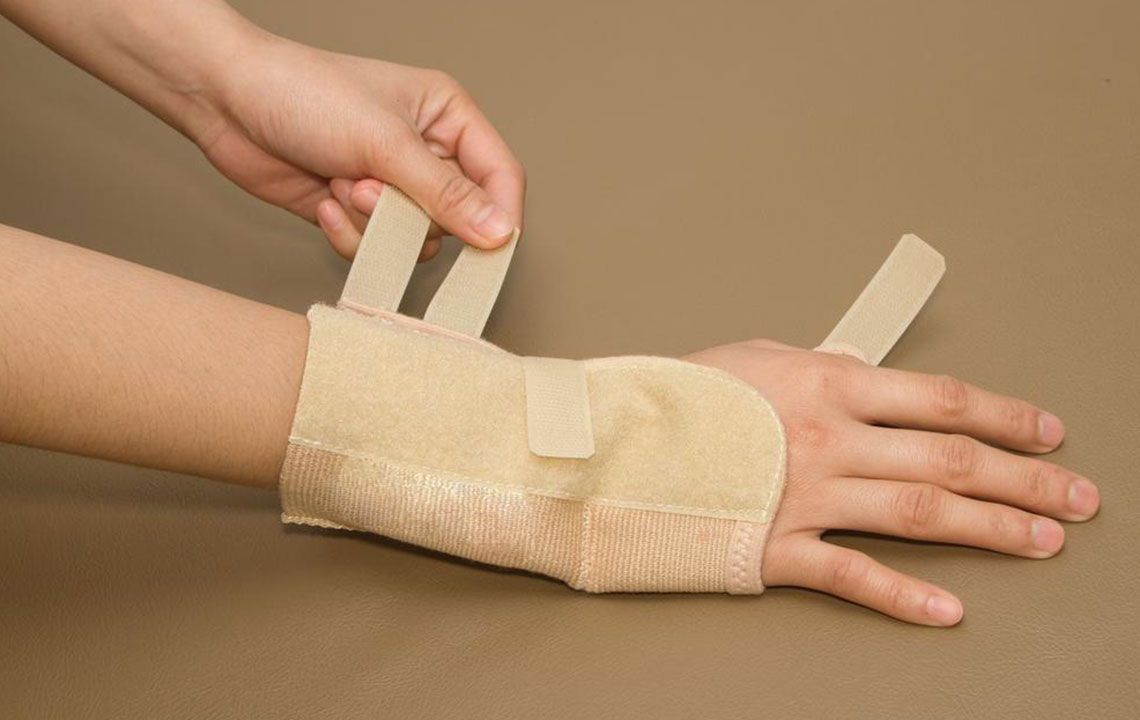Wrist Braces for Good Support

A wrist brace is a support band worn on the wrist. It is meant to provide support, limit movement, and help to heal when you have wrist injuries. They are made of flexible but sturdy materials like nylon or neoprene.
Wrist Injuries
Wrist injuries can occur due to various reasons. If you play sports like tennis or hockey, or if your work involves menial labor like moving around luggage, crates, equipment, etc., you stand at a higher risk of injuring your wrist.
Previous injuries like fractures might cause pain and increase the chances of strains and sprains on the hand. If you work at a desk for long hours, typing or moving a mouse, you risk repetitive strain wrist injuries.
Tasks like writing, painting, carpentry and other such work can also lead to injuries. If you suffer from carpal tunnel syndrome, it could also trigger frequent pain in the wrist and fingers. If you are a video or computer game addict, long hours of using controls like joysticks can cause strain.
The most common cause of wrist injury is slipping and landing on your hands.
Types Of Wrist Braces
Depending on the type of injury, you can wear different kinds of wrist braces. If you are in doubt, consult your doctor. There are many brands and designs of wrist braces that you can buy without a doctor’s prescription. However, some special type of injuries or conditions might need a customized brace. In that case, you have to get the help of your physician in getting the right brace.
Wrist splints offer support to the wrist and help in recovery after injuries. Thumb splints are used for thumb injuries. These mostly cover and support the wrist as well. Some sports like tennis, golf, hockey, and table tennis involve intensive movements of the wrist, putting a strain on it. Sports wrist braces help prevent wrist injuries by providing support to the wrist bones.
A Repetitive Stress Injury (RSI) is caused by repetitive movements like using a mouse or joystick. Repetitive Stress wrist braces help reduce the pain caused by RSI by holding the wrist in neutral position. Post Operative braces are large and stiff wrist braces. They are used to provide wrist support after an operation.
Thumb Spica Wrist Brace
These types of wrist braces provide support for the wrist. They come with a provision for accommodating your thumb and immobilizing it. This kind of splint is helpful when you are suffering from Tendinitis in the thumb region. Thumb Spica wrist brace is also used to provide support when you sustain a scaphoid fracture. The scaphoid bone is one of the wrist bones or carpal bones. Most carpal bone fractures tend to be scaphoid fractures, often caused by a fall with your hands outstretched.
Wrist Cock-up Splint
This type of wrist brace is usually prescribed for ligament tears and Tendinitis. This brace is usually made of cloth with a hole for the thumb. This leaves you free to use your fingers. The splint has metal support on the front or palm side of the wrist. The brace is designed to hold the wrist straight, or in a slightly backward position.
You can also get thermoplastic Wrist Cock-up Splints which is one of the many types of wrist braces. In this case, the back support on the hand is hard, and the brace only covers the front part of the wrist. Cock-up Splints can also be used to provide further wrist bone support after a cast is removed.
Ulnar Gutter Wrist Brace
If you have suffered a fracture in the palm of your hands, in the bones beneath the ring and little finger, you would be advised to use an Ulnar Gutter brace. This brace covers the wrist and the palm on the little finger side. It prevents movement on the damaged side of the palm, but you can still move your thumb, index, and middle fingers.
Radial Gutter Wrist Brace
This works just like the Ulnar Gutter brace. However, this brace is meant to provide support for fractures in the region beneath the middle and index fingers. So, it covers your wrist and the thumb side of your palm, leaving you free to use your little finger, thumb, and ring finger.
Carpal Tunnel Wrist Brace
This wrist brace can provide temporary relief from carpal tunnel syndrome. This condition occurs when the ligaments around the carpal tunnel get inflamed and start putting pressure on the median nerve. This nerve runs from your arm to your hand, thumb, and first three fingers. Wrist braces for carpal tunnel help immobilize the wrist joint. The brace covers the wrist and has a loop which you slip over your thumb. Preventing movement in the wrist for some time can help reduce pain. Customized wrist braces are usually made out of thermostat, fiberglass or plaster for a perfect fit.
Many types of wrist braces help reduce pain, provide joint and bone support and help heal fractures and other injuries. If you do not need customized wrist braces, you can buy many types of wrist braces over the counter. Consult with your doctor to find which type of wrist brace you need. You must also keep in mind to buy braces that have good padding and are comfortable to wear.


